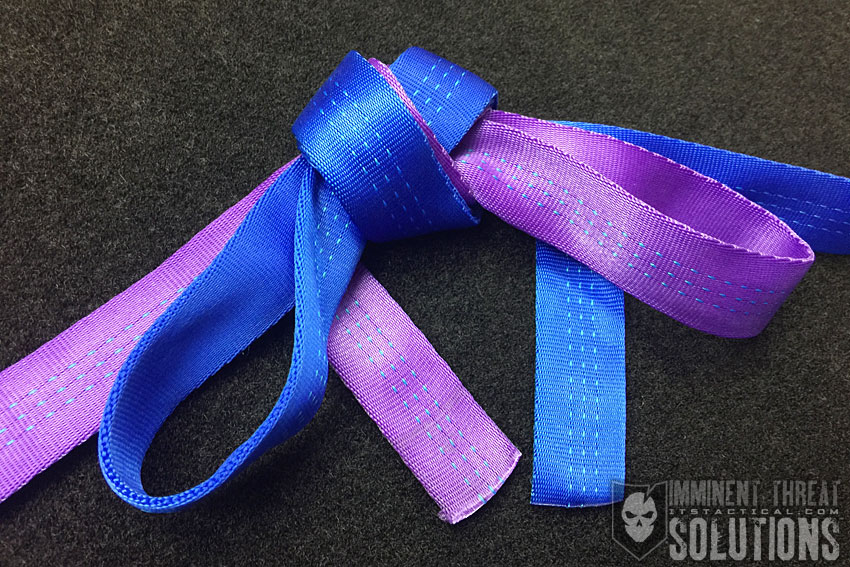

Our Knot of the Week series in HD continues today with one of my favorite loops, the Frost Knot. While not only great for creating a fixed loop out of tubular webbing, it can also be used to join two lengths together. I will say that with a caveat though and mention that my go-to for creating a fixed loop for webbing while climbing will always be a Tape Knot.
Primarily above all these uses, the Frost Knot is used to create the first part of an Etrier, which is French for Stirrup. We’ll be going over how to tie and Etrier on the next Knot of the Week, so it’s important that we go over this first.
(Strength: 5/Security: 5/Stability: 4/Difficulty: 3) See below for what these ratings mean.
The Frost Knot, as mentioned above, is used to create the attachment point for an Etrier. Formed from a single piece of webbing, it has quite a few uses beyond the Etrier. The video above is the best way to demonstrate the two different methods, creating a fixed loop from a single piece of tubular webbing, or joining two pieces together like the photo above shows.
Additionally, if you’ve been following the KOTW series, we went over the Handcuff Knot last week. Another use for that particular knot is a Fireman’s Chair and the Frost Knot can be used to join the webbing together after tying it to create a fixed loop to attache a carabiner to.
Strength/Security/Stability/Difficulty
Each knot will be assigned a rating from 1-5 (1 representing the lowest score) based on the following four properties:
Strength – All knots will weaken the strength of a rope, however, there are knots that are stronger than others. The scale here will reflect how strong the rope remains with the specified knot.
Security – The security scale refers to how well the knot will stay tied, and resist coming loose under a normal load.
Stability – Stability refers to how easily the knot will come untied under an abnormal load (i.e. the knot being pulled in a direction it was not intended to) A lower score here represents instability.
Difficulty – The lower the number, the easier a knot is to tie.

Do you enjoy witty banter and nostalgic geekdom all while sipping on a fine aged scotch? Then you’ll love our podcast!

Shop the ITS Store for exclusive merchandise, equipment and hard to find tactical gear.

Discussion